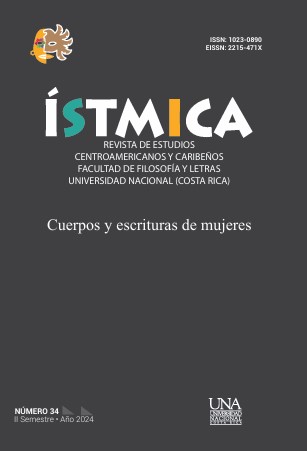Havana. An approach from the visuality of its streets
DOI:
https://doi.org/10.15359/istmica.34.06Keywords:
Havana, urban visuality, conservation, photography, visual artsAbstract
Havana is an old city that was once modern. For many scholars, cities,
like their inhabitants, are born, develop and die. They die when there are no actions that rescue them, preserve them architecturally and
make them live. Visually, our city is dying today. Beyond the purposes
of a group of works in the Historic Center, guarded by the memory of the city historian, Havana is much more than that perimeter declared by Unesco, in 1982, a World Heritage Site and a Wonder City, in 2016. Since then, little by little, its lights have gone out in a great sea of darkness, which urgently needs to be restored with a policy that truly reinforces the existing structures before it is too late.
References
Coyula, Mario. «Vivir La Habana. Arquitectura cubana entre sociedad y la cultu-ra». La Gaceta de Cuba 6 (2011): 5.
Fernández, Rosa. 2014. «Graffitis de mi ciudad, ¿para bien o para mal?» Cubasi.cu,
de agosto. https://cubasi.cu/es/cubasi-noticias-cuba-mundo-ultima-hora/ item/26538-graffitis-de-mi-ciudad-%C2%BFpara-bien-o-para-mal%3F
Legañoa, Maylin. 2014. «Coyula sobre La Habana: debe ser una ciudad agradable, amable, no hostil». Cubadebate, 15 de agosto. http://www.cubadebate.cu/ noticias/2014/08/15/coyula-sobre-la-habana-debe-ser-una-ciudad-agradable-amnable-no-hostil/amp/
Odio, Carlos A. «Transformaciones e incidencia en la imagen de La Habana».
Arquitectura y Urbanismo 28, no. 3 (2007): 23-27.
Otero, Concepción. Arquitectura cubana: metamorfosis, pensamiento y crítica.
La Habana: Artecubano Ediciones, 2002.
Rey, Gina. «Repensar La Habana: en búsqueda de la sustentabilidad urbana».
Revista Iberoamericana de Urbanismo 7 (2012): 43-67.
Rosete, Hilario y Guanche, Julio César. La ciudad cuesta, pero vale. https://jcguanche.wordpress.com/2014/07/08/la-ciudad-cuesta-pero-vale-entrevista-con-mario-coyula/
Tristá Pérez, Antonia María y Cárdenas Molina, Gisela. Diccionario ejemplifi-
cado del español de Cuba. Tomo 2. La Habana: Ciencias Sociales, 2016.
Published
How to Cite
Issue
Section
License
Copyright (c) 2024 ÍSTMICA. Revista de la Facultad de Filosofía y Letras

This work is licensed under a Creative Commons Attribution-NonCommercial-ShareAlike 4.0 International License.
Las personas autoras que publiquen en esta revista permiten cesión gratuita, exclusiva, de ámbito mundial de sus derechos de autoría a la Universidad Nacional (Costa Rica), conservando únicamente sus derechos morales sobre la obra publicada.
Los artículos pueden ser citados y copiados, citando a la persona autora y la fuente. Todos los artículos publicados en la Revista Ístmica están protegidos bajo una Licencia Creative Commons Atribución-NoComercial-CompartirIgual 4.0 Internacional








